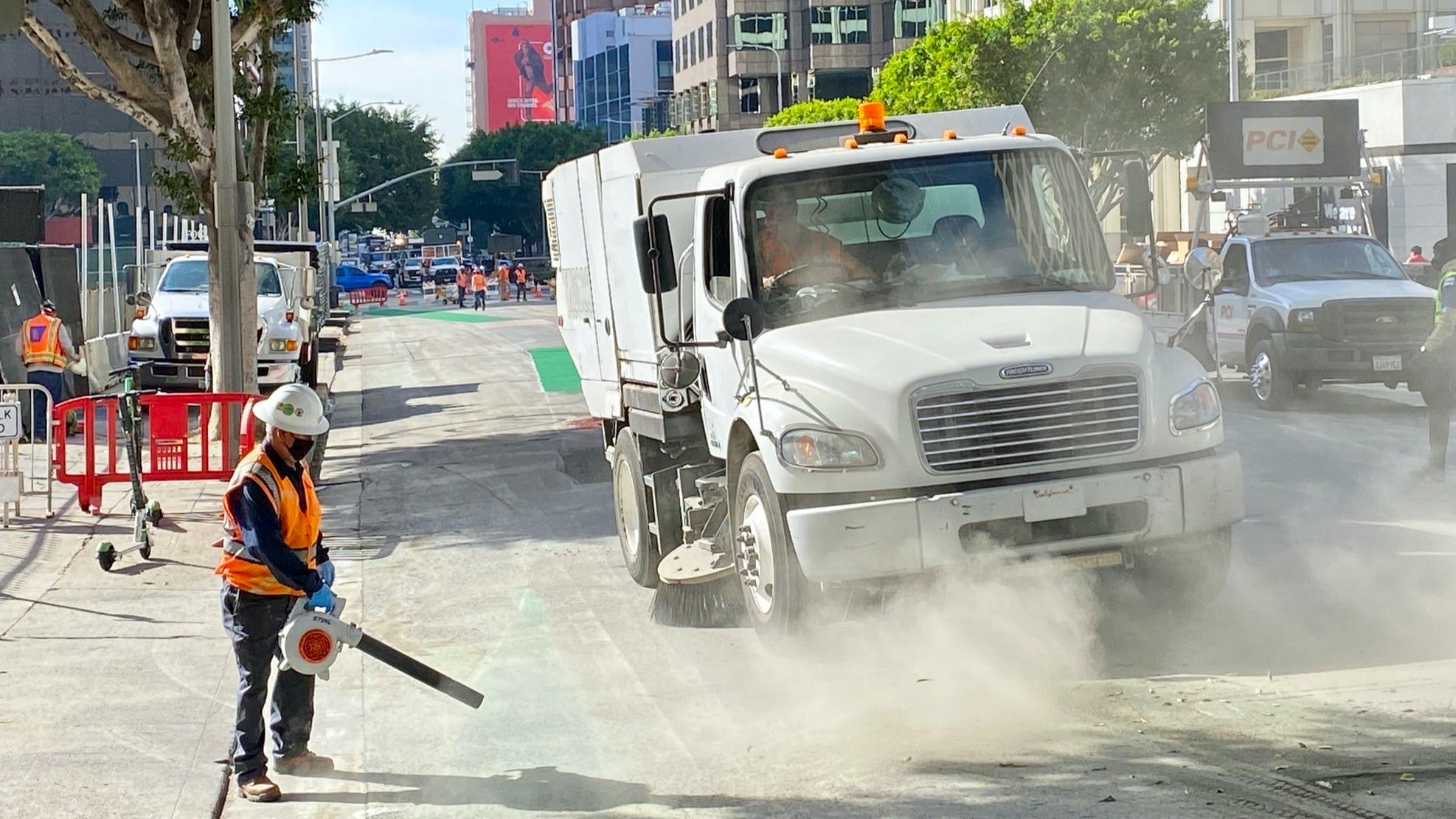The 5 Best Strong Towns Articles and Podcasts from 2021: Daniel's Picks
I’ll be closing out this end-of-the-year series, in which we’ve been featuring some of the Strong Towns team’s favorite content from 2021. My colleagues Rachel Quednau, John Pattison, and Shina Shayesteh have already shared their top picks throughout the week. Here are mine:
1. The “American Alleys” series, by Thomas Dougherty
The ultimate mission of Strong Towns is to repair the North American development pattern. If we are to be successful, the first thing we must do is open eyes to the potential that exists all around us: to teach people to see their city not as it is, but as it could be. Thomas Dougherty has done a brilliant job of that in his illustrated series on one of the most understudied and underappreciated urban spaces: the alley.
Dougherty offers a crash course in the history of alleys, the reasons for their often neglected state today, and most importantly, a vision for how we could put them to better use in the future, as pedestrian-friendly, intimate, even beautiful "minor streets," rather than blank utilitarian spaces. Indeed, as we turn out of necessity toward thickening up existing neighborhoods rather than building new ones, alleys may just prove to be one of our most powerful secret weapons.
2. “Fighting an Urban Highway Expansion in Shreveport” (Webcast)
If you want to know what it was like to be alive in the 1960s when state highway departments were bulldozing low-income, often predominantly Black communities right and left to build freeways, you don't need a time machine. You just need to take a trip to the Allendale neighborhood of Shreveport, Louisiana, today. But if you can't do that, watch this webcast instead. It's essential viewing (or listening; we also published the audio on the Strong Towns Podcast) if you want to see how America's Infrastructure Cult operates, and why a project as shockingly ill-conceived as the proposed Inner-City Connector, which we first wrote about at length in 2017, remains on the table.
The most important thing about this story, though, isn't the highway; it's the place the highway would carve up. During our webcast with four heroic Shreveport residents fighting the Inner-City Connector—neighborhood podcast host Roosevelt Bryant, city councilwoman LeVette Fuller, local non-profit director Kim Mitchell, and Shreveport-based engineer Tim Wright—you will get to know Allendale and the incredible amount of potential and bottom-up initiative present in a place that deserves to be so much more than "drive-over country."
(Source: Pexels..)
3. “Are Traffic Engineers Sociopaths?” by Michel Durand-Wood
Every city needs a Michel Durand-Wood, or ten. Winnipeg, Manitoba, is lucky to have the original. Strong Towns member Durand-Wood's writing is one of the best things to happen to us in 2021. Although we had published his work a couple times prior to this year, he has spent this year churning out absolute bangers at his blog Dear Winnipeg, and has graciously allowed us to republish many of them for our international audience.
Michel's punchy writing, laden with just enough humor, calls his city's leadership to account not only for the choices they've made, but more importantly, for the ones they haven't made—or rather, have made through inaction or according to unexamined, invisible value systems.
That's the real point of the deliberately provocative title of this one: not that traffic engineers are individually sociopaths (we all know they aren't) but that the implicit values of the traffic engineering profession have sociopathic consequences. They result in dead neighbors and degraded neighborhoods, in the name of nothing more important than traffic flow, an unspoken priority that none of us were actually asked to choose.
(Source: Unsplash.)
4. “After the Innovation Revolution, Who Will Clean the Streets?” by Anthony Barr
This excellent essay is nominally a review of a book, The Innovation Delusion, by Andrew L. Russell and Lee Vinsel, but in truth it's so much more than that. I love the way Anthony Barr pulls together disparate threads here to make the case that maintenance is not just a practical or financial matter for our communities, but ultimately a cultural and moral one. This paragraph is a great example:
It takes a rooted knowledge of a place, and a respect for its history, to identify wise priorities for maintenance and revitalization. And it also takes a love of place to motivate coalitions to advocate for the resources needed to maintain, especially when that means competing with ambitious politicians under the power of the Innovation Delusion. In order to meet this demand, we desperately need to revive traditions of civic humanism that can form the kind of citizens who can identify where maintenance is needed. On top of that, we will also need many more people who have the hard skills to do the maintenance, and that means advocating for the dignity of the trades, the dignity of caretaking, the dignity of all the fundamental work that provides the foundation for our society.
It's all connected. We will not build a nation of financially strong and resilient places without (re?)acquiring the social and cultural equipment it takes to prioritize maintenance and care.
(Source: Flickr.)
5. “Bond Ratings Are For Investors, Not Taxpayers,” by Charles Marohn
Here's something that every journalist who covers municipal finance; every city official; heck, every local taxpayer should understand—and yet shockingly few do. It's extremely common for cities to tout their flawless bond rating as evidence that they are financially set for the long haul, and prudent stewards of the public's money. But this metric, in practice, means nothing of the sort. And once you understand why, it feels like it should have been obvious all along.
I was first drawn to Strong Towns years ago by my now-colleague Chuck Marohn's genius for exposing the emperor's nakedness in terms that you don't need a planning degree to understand, and this short piece is Chuck in fine form. It's not a deep dive or a math-heavy expose; it's just a simple, effective truth bomb of the kind that drew Strong Towns its initial audience as the blog of a contrarian "recovering" civil engineer and urban planner.
———
One of the great things about working for Strong Towns is having an excuse to read everything we publish at Strong Towns each day—there’s such a wealth of insight and original perspectives, and I’m glad to know so many of our brilliant contributors. Going last this week made the job of picking just five favorites easier for me, as my colleagues had already snatched up a lot of other brilliant pieces to nominate for shout-outs. So make sure you read the rest of our 2021 Staff Picks if you haven’t yet!





Daniel Herriges has been a regular contributor to Strong Towns since 2015 and is a founding member of the Strong Towns movement. He is the co-author of Escaping the Housing Trap: The Strong Towns Response to the Housing Crisis, with Charles Marohn. Daniel now works as the Policy Director at the Parking Reform Network, an organization which seeks to accelerate the reform of harmful parking policies by educating the public about these policies and serving as a connecting hub for advocates and policy makers. Daniel’s work reflects a lifelong fascination with cities and how they work. When he’s not perusing maps (for work or pleasure), he can be found exploring out-of-the-way neighborhoods on foot or bicycle. Daniel has lived in Northern California and Southwest Florida, and he now resides back in his hometown of St. Paul, Minnesota, along with his wife and two children. Daniel has a Masters in Urban and Regional Planning from the University of Minnesota.